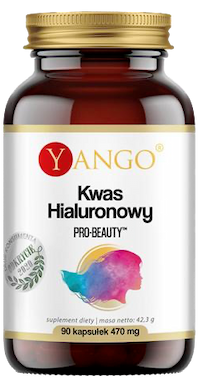Hyaluronic acid - what it is, properties, effects, how to use it
Elastic skin, functioning joints, smoothed wrinkles - these are just a few of the effects that hyaluronic acid can give you.


Learn more about our editorial process
.

Learn more about our editorial process
.

Learn more about our editorial process
.

Learn more about our editorial process
.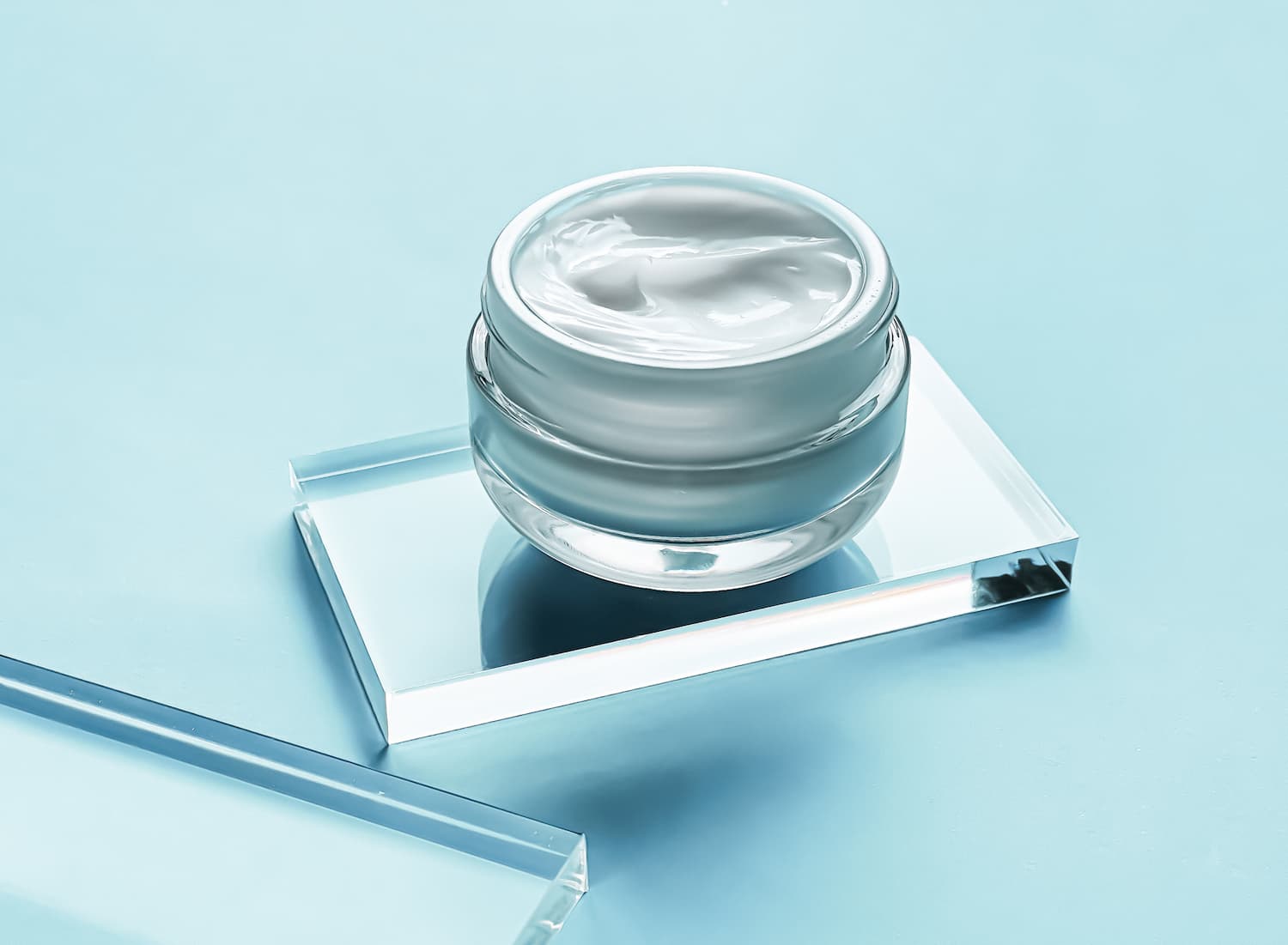
Why you can trust us
Articles on Natu.Care are written based on scientific research, data from government websites and other reliable sources. The texts are written in cooperation with doctors, nutritionists and other health and beauty experts. Articles are reviewed before publication and during significant updates.
.Learn more about our editorial process
.Information about advertisements
Content on Natu.Care may contain links to products from the sale of which we may receive a commission. When creating content, we adhere to high editorial standards and take care to be objective about the products discussed. The presence of affiliate links is not dictated by our partners, and we select the products we review ourselves completely independently.
.Learn more about our terms and Conditions
.Hyaluronic acid has delighted millions of female users. And for good reason. Instead of butterflies in the stomach - it causes firmness in the cheeks. This one inconspicuous molecule can bring huge benefits to your beauty and health.
Hyaluronic acid can help in the fight against ageing skin. It is one of the components of connective tissue - it is mainly found in the skin and is responsible for hydrating and tightening the complexion. It is used in cosmetology, aesthetic medicine, orthopaedics, dermatology and even gynaecology. It can also be found in supplements and cosmetics.
With Master of Cosmetology, Paulina Chylinska, we present the most important information about hyaluronic acid.
From this article you will learn:
.- What hyaluronic acid is and how it is made .
- What properties it has .
- What hyaluronic acid treatments are available to you .
- How to use hyaluronic acid preparations correctly .
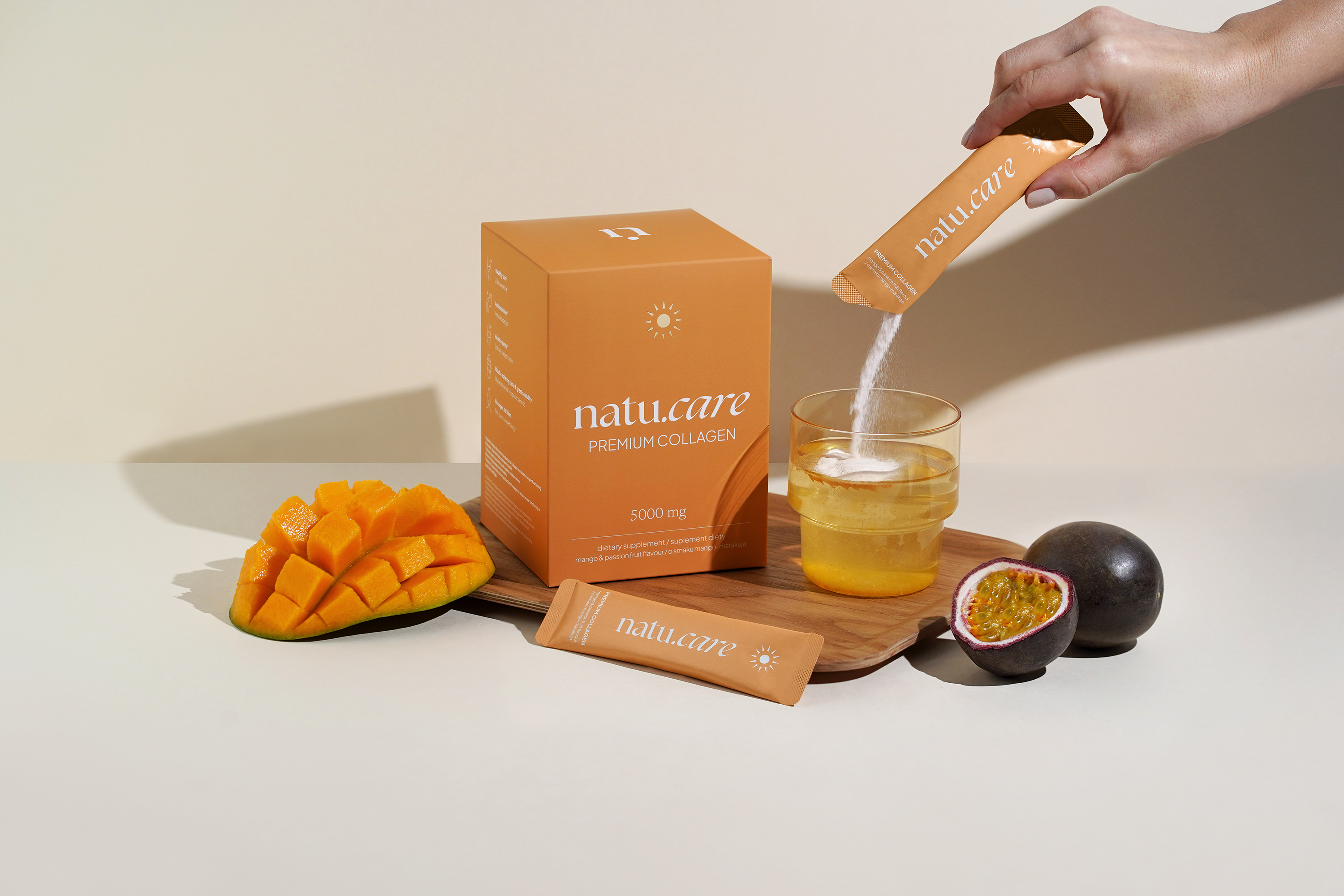
Sprawdź, za co pokochały go tysiące klientek Kolagen Premium (5000 mg) mango-marakuja -15% z kodem BLOG15
Natu.Care Kolagen Premium 5000 mg, mango-marakuja
Natu.Care Kolagen Premium dla zdrowia stawów, skóry, paznokci i włosów. Najlepsza przyswajalność. Optymalna dawka 5 000 lub 10 000 mg. Przebadany przez niezależne laboratorium.
Zobacz więcej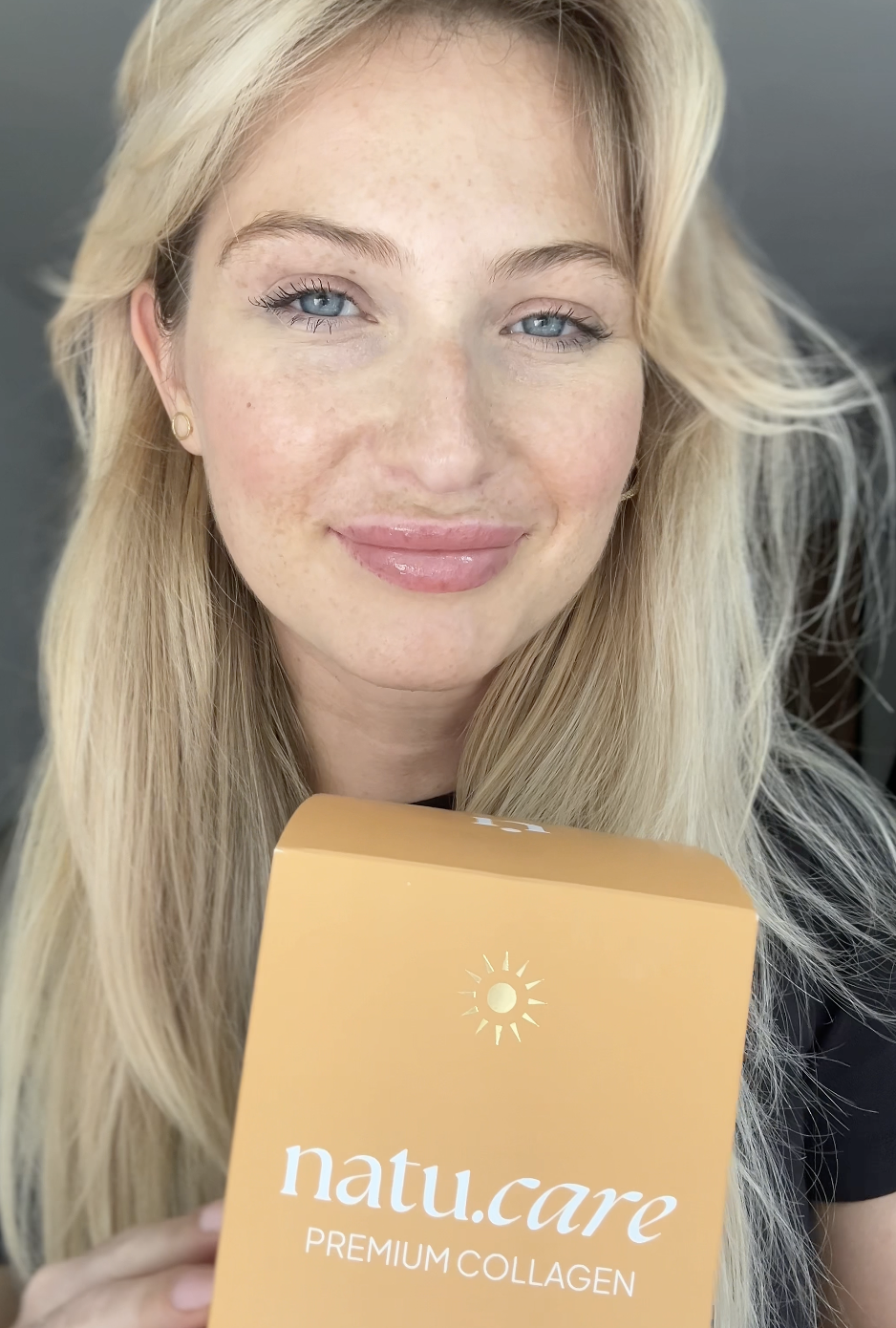
Wybrałam kolagen Natu.Care, ponieważ miał super opinie – a to było dla mnie bardzo ważne! Odkąd go stosuję, moja skóra znacznie się poprawiła i jest nawilżona, a na głowie pojawiły się nowe "baby hair".@Kasia S.
See also:
- Most powerful collagen
- The best collagen
- Facial collagen
- Collagen for the skin
- Collagen for wrinkles
- Hydrolyzed collagen
- Vitamin C for the face .
- Retinol
What is hyaluronic acid?
.
Hyaluronic acid is a natural component of connective tissue - found mainly in the skin (50%) and joints. It is responsible for the hydration and elasticity of the tissues. In the joints, it acts as a "lubricant" - it ensures the hydration of bone and cartilage tissue, thus preventing injuriesand.
.
As the years go by, the concentration of hyaluronic acid in the body decreases. This can lead to skin dehydration and the formation of wrinklesand.
Most commonly hyaluronic acid is used in aesthetic medicine. Doctors also use it in orthopaedics, ophthalmology and gynaecology.
How is hyaluronic acid obtained?
.
Hyaluronic acid occurs naturally in the body, but can also be produced in several other waysand, for example by:
- extraction from animal tissues (one popular source of hyaluronic acid is rooster comb), .
- bacterial fermentation, .
- chemical synthesisand. .
Tissue extraction carries some risk of animal disease transmission, so scientists are slowly moving away from it. Bacterial fermentation produces pure, environmentally friendly and inexpensive hyaluronic acid. Chemical synthesis, on the other hand, allows customised forms of the acid to be produced. However, it is expensive and complex.
What is the difference between low-molecular hyaluronic acid and high-molecular hyaluronic acid?
.
Low-molecular hyaluronic acid, as the name suggests, has smaller molecules so they can reach the deeper layers of the skin. High-molecular-weight hyaluronic acid, on the other hand, has larger molecules that stay closer to the surface and is where they provide the best resultsand.
.
Hyaluronic acid preparations
.
Detailed analysis of hyaluronic acid can be found below. If you just want to buy a good preparation with this ingredient, here are some of the most qualitative suggestions.
Solgar Hyaluronic Acid Collagen Complex
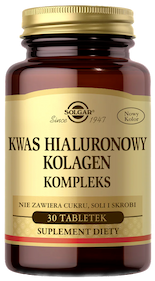
- Collagen content: 720 mg hydrolysed type II collagen .
- Additional active ingredients: vitamin C, hyaluronic acid, chondroitin sulfate
- Form: capsules .
- Dose: one capsule per day .
- Sufficient for: 30 days .
Product description
The product is based on the patented BioCell Collagen II® complex, whose mainóingredient is collagen hydrolysate extracted from chicken sternum cartilage. The supplement improves skin firmness, elasticity and hydrationóry. It has a beneficial effect on the scalp and improves the condition of hairós and nail plate.
.The supplement will also have a positive effect on the joints and musculoskeletal system.
Pros and cons
The product is based on the patented BioCell Collagen II® complex, whose mainóingredient is collagen hydrolysate extracted from chicken sternum cartilage. The supplement improves skin firmness, elasticity and hydrationóry. It has a beneficial effect on the scalp and improves the condition of hairós and nail plate.
.The supplement will also have a positive effect on the joints and musculoskeletal system.
Additional information
The product is based on the patented BioCell Collagen II® complex, whose mainóingredient is collagen hydrolysate extracted from chicken sternum cartilage. The supplement improves skin firmness, elasticity and hydrationóry. It has a beneficial effect on the scalp and improves the condition of hairós and nail plate.
.The supplement will also have a positive effect on the joints and musculoskeletal system.
The product is based on the patented BioCell Collagen II® complex, whose mainóingredient is collagen hydrolysate extracted from chicken sternum cartilage. The supplement improves skin firmness, elasticity and hydrationóry. It has a beneficial effect on the scalp and improves the condition of hairós and nail plate.
.The supplement will also have a positive effect on the joints and musculoskeletal system.
Pharmovit hyaluronic acid 120 mg
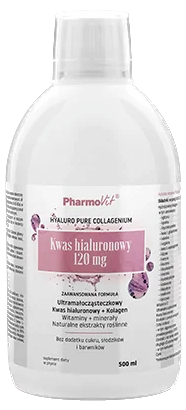
- Content collagen: 500 mg collagen hydrolysate
- Additional active ingredients: vitamin C, hyaluronic acid, grape seed extract, long oyster root extract, zinc
- .
- Form: liquid
- .
- Dose:15 ml per day
.Sufficient for: 33 days.
Product description
Hydrolysed collagen with added vitamin C and hyaluronic acid. The formula can effectively support the health of the skinóry, hairów and nails. In addition, these ingredients together with extracts and zinc support antioxidant protection and immunity.
Pros and cons
Hydrolysed collagen with added vitamin C and hyaluronic acid. The formula can effectively support the health of the skinóry, hairów and nails. In addition, these ingredients together with extracts and zinc support antioxidant protection and immunity.
Additional information
Hydrolysed collagen with added vitamin C and hyaluronic acid. The formula can effectively support the health of the skinóry, hairów and nails. In addition, these ingredients together with extracts and zinc support antioxidant protection and immunity.
Hydrolysed collagen with added vitamin C and hyaluronic acid. The formula can effectively support the health of the skinóry, hairów and nails. In addition, these ingredients together with extracts and zinc support antioxidant protection and immunity.
Pharmovit hyaluronic acid 150 mg
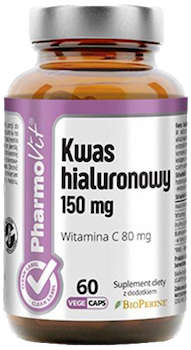
- Active ingredients: vitamin C, hyaluronic acid, Orafti®GR inulin, BioPerine® .
- Form: capsules .
- Dose: 1 capsule per day .
- Sufficient for: 60 days .
Product description
A dietary supplement with vitamin C and hyaluronic acid thatóry supported to improveóry overall quality of life and health. The formula supports the health of the skinóry, hairóry and nails. In addition, hyaluronic acid can have a positive effect on jointós health.
Pros and cons
A dietary supplement with vitamin C and hyaluronic acid thatóry supported to improveóry overall quality of life and health. The formula supports the health of the skinóry, hairóry and nails. In addition, hyaluronic acid can have a positive effect on jointós health.
Additional information
A dietary supplement with vitamin C and hyaluronic acid thatóry supported to improveóry overall quality of life and health. The formula supports the health of the skinóry, hairóry and nails. In addition, hyaluronic acid can have a positive effect on jointós health.
A dietary supplement with vitamin C and hyaluronic acid thatóry supported to improveóry overall quality of life and health. The formula supports the health of the skinóry, hairóry and nails. In addition, hyaluronic acid can have a positive effect on jointós health.
Product description
Hyaluronic Acid Pro Beauty™ is a dietary supplement thatóry contains substances and plant extracts that are valuable for the skinóry. Fine-molecule hyaluronic acid will moisturise and nourish your complexion on a cellular level, i.e. from the inside.
.Retain your skinós health and beauty with regular supplementation of Hyaluronic Acid Pro Beauty™.
.Pros and cons
Hyaluronic Acid Pro Beauty™ is a dietary supplement thatóry contains substances and plant extracts that are valuable for the skinóry. Fine-molecule hyaluronic acid will moisturise and nourish your complexion on a cellular level, i.e. from the inside.
.Retain your skinós health and beauty with regular supplementation of Hyaluronic Acid Pro Beauty™.
.Additional information
Hyaluronic Acid Pro Beauty™ is a dietary supplement thatóry contains substances and plant extracts that are valuable for the skinóry. Fine-molecule hyaluronic acid will moisturise and nourish your complexion on a cellular level, i.e. from the inside.
.Retain your skinós health and beauty with regular supplementation of Hyaluronic Acid Pro Beauty™.
.Hyaluronic Acid Pro Beauty™ is a dietary supplement thatóry contains substances and plant extracts that are valuable for the skinóry. Fine-molecule hyaluronic acid will moisturise and nourish your complexion on a cellular level, i.e. from the inside.
.Retain your skinós health and beauty with regular supplementation of Hyaluronic Acid Pro Beauty™.
.Properties of hyaluronic acid
.
Most of us associate hyaluronic acid with cosmetics. But its effects are not only important for the skin, and the effects of use can be much widerand.
Properties of hyaluronic acid :
.
- .
- fights wrinkles, .
- prevents skin dryness, .
- promotes collagen production, .
- gives the skin elasticity, .
- encourages the wound healing process, .
- positively influences elastin synthesis (protein responsible for tissue elasticity and resilience), .
- keeps joints moist - acts as a lubricant, shock absorber and stabiliser of the joint structure, .
- humidifies hair, .
- can give firmness and elasticity to the vagina of post-menopausal women, .
- supports the treatment of dry eye syndrome, .
As we age, collagen and elastin fibres stretch the skin, resulting in sagging. This can be prevented by stimulating the skin and thickening it. Micro-needle mesotherapy, micro-needle radiofrequency or needle mesotherapy allow for this..
 .
.
Paulina Chylinskamagister of cosmetology
.Where is hyaluronic acid used?
.
Cosmetology
.
Exemplary cosmetological uses of hyaluronic acid are:
.
- Hydrating treatments. Hyaluronic acid is often used in treatments such as mesotherapy. It involves injecting the substance directly into the skin to moisturise and visually rejuvenateand. .
- Wrinkle fillers. Hyaluronic acid is often an ingredient in so-called wrinkle fillers. They fill in the spaces created by the loss of collagen and elastin and thus eliminate wrinklesand. .
- Lift treatments. These involve injecting hyaluronic acid into specific areas of the face. This makes it possible to improve its oval shape, as well as reduce wrinklesand.
- Creams and cheeses. The vast majority of face creams and serums have hyaluronic acid in their formulation. As a result, they provide hydration to the skin and reduce imperfectionsand. .
You have to wait several months for the effects of needle mesotherapy. During this time, following the administration of the appropriate cocktail, the skin has to produce collagen, elastin and hyaluronic acid. Most often, a complete needle mesotherapy consists of a series of 4-5 treatments every fortnight..
 .
.
Paulina Chylinskamagister of cosmetology
.Interesting facts
Hyaluronic acid also has an effect on hair - it can be used to moisturise and increase elasticity. Many conditioners and shampoos have hyaluronic acid in their ingredients.
See also:
Aesthetic medicine
.
Besides cosmetology, aesthetic medicine is the field in which hyaluronic acid is used most frequently. One of the more popular treatments is to increase lip volume with hyaluronic acidand. Other possible treatments include:
- improving facial contours, .
- increasing the volume of the cheek or forehead area, .
- improving the quality of the skin (moisturising it or reducing wrinkles), .
Complications, such as skin necrosis or inflammation, can occur after hyaluronic acid injection in the lips.
Many people also undergo nose correction surgery with hyaluronic acid. With it, it is possible to correct minor irregularities or aesthetic defects. It should be noted, however, that the hyaluronic acid procedure will not produce such spectacular results as plastic surgery or classic nose surgery.
Severe complications such as necrosis can occur with hyaluronic acid nose correction..
 .
.
Paulina Chylinskamagister of cosmetology
.Recommendations after hyaluronic acid treatment
.
After hyaluronic acid treatment, drink plenty of water (at least 2.5 litres a day). For the first 2-3 days, limit your exposure to temperature fluctuations - do not sit in the sun, do not use the sauna. For one week after surgery, limit exercise and give up alcohol and cigarettes.
Orthopaedics
.
Hyaluronic acid is used to treat arthritis or osteoarthritis (such as the knee). Doctors use it for most conditions associated with synovial loss. Hyaluronic acid has similar properties to it - it has a moisturising, cushioning effect and increases joint mobilityand.
The substance is introduced into the joint by injection (shot). Hyaluronic acid is also used in the treatment of sports injuries such as sprains and dislocations.
Hyaluronic acid is also used in the treatment of sports injuries such as sprains and dislocations.
Hyaluronic acid knee injections - side effects
.
Injections into the joint (e.g. hyaluronic acid in the knee) may be associated with temporary side effects. These most commonly include swelling of the joint or pain. If side effects persist over a long period of time, see your doctor.
Dermatology
.
Hyaluronic acid speeds up and soothes the healing process of wounds and skin imperfections. It may also be helpful in the treatment of acne lesions. However, further studies are needed to confirm the role of this substance in the treatment of acneand.
Micro-needle mesotherapy is most commonly used to treat acne lesions. It allows the skin to be remodelled and to benefit from its natural regenerative functions. Furthermore, hyaluronic acid is often found in moisturising cosmetics, especially indicated for acne-prone skins - however, these preparations will not treat acne..
 .
.
Paulina Chylinskamagister of cosmetology
..
Gynaecology
.
In gynaecology, hyaluronic acid is used to treat vaginal conditions after menopause or childbirth. When injected, the substance moisturises the vagina and gives it firmness and elasticity. It thus reduces dryness and improves the quality of sexual lifeand.
Ophthalmology
.
In ophthalmology, hyaluronic acid is used to treat dry eye. However, research suggests that the substance can also support people with cataracts. Hyaluronic acid is also often used in the manufacture of contact lenses. Its molecules retain moisture and thus increase comfort and safetyand.
How to use hyaluronic acid?
.
You can apply hyaluronic acid at home in several different waysand:
.
- Orally. Hyaluronic acid in tablets or liquid is a popular ingredient in many dietary supplements. It can reduce pain associated with arthritis or improve the condition of the skin.
- For the skin. Shampoos, lotions, creams, gels, ointments or face serums are just some of the products used on the skin that contain hyaluronic acid. They are most commonly used to moisturise the complexion or reduce wrinkles. .
- For the eyes. Because of its moisturising properties, hyaluronic acid is often an ingredient in eye drops.
- For eyes.
- In the intimate area. Hyaluronic acid is the basis of most gels, creams or lubes, which are most often recommended for women with vaginal dryness or pain (e.g. during menopause).
- .
- Hyaluronic acid is also used to moisturise the intimate area.
- For the nose. Many solutions intended for inhalation, are produced on the basis of hyaluronic acid. These can be helpful in, among other things, moisturising and decongesting the airwaysand.
Precaution
.Never attempt to perform hyaluronic acid injections yourself. Improperly administered injections can lead to serious health problems and even death.
Who should consider using hyaluronic acid?
.
Hyaluronic acid in the form of supplements, creams, gels or ointments will be ideal for you if you want to support the health of your skin. By using such supplements, you can hydrate your skin, make it firmer and more elastic, and prevent collagen deficiency.
If, on the other hand, you're looking to fill in wrinkles, lift facial skin or add volume to cheeks and lips, consider a professional hyaluronic acid treatment - you can get it at aesthetic medicine clinics, cosmetic surgeries or dermatologists.
.
Contraindications to the use of hyaluronic acid
.
Contraindications to the use of hyaluronic acid should be divided into two groups: contraindications to the use of cosmetics or supplements with this substance and contraindications to cosmetic procedures using hyaluronic acid.
Contraindications to the use of hyaluronic acid.
- .
- When it comes to the use of cosmetics or supplements with hyaluronic acid, you simply have to be wary of allergies to any ingredient in a given preparation.
- Filling treatments cannot be performed if you are undergoing an infectionand. .
Different hyaluronic acid treatments may have different contraindications. Be sure to talk to your doctor about your medical history before your treatment, and let him or her know about any medications or supplements you are taking.
Is hyaluronic acid safe?
.
Yes, hyaluronic acid is a safe substance. Side effects are rare and are usually harmless. Remember, however, that prescription formulations with hyaluronic acid should be used as directed by your doctorand.
Hyaluronic acid - side effects
.
Side effects when taking hyaluronic acid in supplements or when applying cosmetics to the skin are rare. They most commonly include allergic reactions, which manifest as skin irritation or discolouration.
Much more side effects are associated with treatments that use this substance.
Side effects after hyaluronic acid treatmentand:
- swelling, .
- redness, .
- bruising, .
- pain, .
- pruritus, .
Most often the side effects subside within a few days, at most, after the procedure. However, if they persist for a longer period of time and tissue necrosis, inflammation or a lump appears in the treated area, go to the doctor immediately.
Hyaluronic acid in pregnancy
.
Skin changes, and damaged nails or hair during pregnancy worry many mums-to-be. However, research suggests that hyaluronic acid is safe, so you can support yourself during pregnancy with cosmetics that contain itand.
More invasive hyaluronic acid treatments are not performed during pregnancy. Anything that requires an injection (injection) is inadvisable. The exception is white cosmetics, i.e. treatments without epidermal breakage.
Hyaluronic acid and breastfeeding
.
During breastfeeding, recommendations are very similar to those during pregnancy. The use of cosmetics is usually safe and you can use them without fear. It is slightly different with hyaluronic acid supplements and treatments. If you intend to take this substance orally or undergo any treatment with it - advise your doctor.
.
Hyaluronic acid and alcohol
.
After hyaluronic acid treatment, avoid alcohol for 2-7 days. When using cosmetics or most supplements (always check the manufacturer's recommendations), alcohol in moderate amounts is safe - but, because it dries out the skin, it can weaken the effect of the hyaluronic acidand.
See also:
.
Summary
.
In summary
- Hyaluronic acid is a natural component of connective tissue.
- Preventing wrinkles, preventing the skin from drying out or giving it elasticity are some of the properties of hyaluronic acid.
- Hyaluronic acid is a natural component of connective tissue.
- Hyaluronic acid is used in: cosmetology, aesthetic medicine, orthopaedics, gynaecology, dermatology and ophthalmology. .
- At home, hyaluronic acid can be applied to the skin, orally or to the eyes, among others. .
- Hyaluronic acid is considered safe by specialists. .
- After treatment with hyaluronic acid, side effects such as swelling, redness, pain or itching may occur. .
FAQ
.How much does hyaluronic acid facial treatment cost?
.The cost of a hyaluronic acid treatment depends on the part of the face you choose, as well as the aesthetic practitioner's price list. Most often you will pay between 800 and 1,300 PLN.
.Does hyaluronic acid remove nasolabial furrows?
.No, hyaluronic acid will not remove nasolabial furrows. The cosmetology master explains that it can only reduce their visibility. For the rest, it is not the best way to treat such imperfections. Furrows are best massaged and treated with treatments that stimulate the skin.
How long does hyaluronic acid last on the lips?
.Hyaluronic acid injected into the lips lasts from 6 to 12 months.
Hyaluronic acid or plasma in the knee - which to choose?
.Research suggests, that the intramedullary injection of platelet-rich plasma (for knee osteoarthritis) was more effective in terms of both short-term recovery and long-term pain relief. Let us point out, however, that it is up to your doctor to decide which solution is better in your caseand.
What not to combine hyaluronic acid with?
.Hyaluronic acid should not be combined with oil-based cosmetics. The substance is unable to penetrate them. Therefore, if you use skin oils, use them before applying hyaluronic acid creams.
Botox or hyaluronic acid?
.It depends on what you want to achieve. Both techniques have their advantages, disadvantages and different applications.
Botox reduces the appearance of facial wrinkles such as crow's feet, wrinkles between the eyebrows and lines on the forehead. Hyaluronic acid is a natural component of the skin that will take care of its hydration. Its main use is to fill in lines, wrinkles and furrows on the face, as well as adding volume to the lips, cheeks and other areas.
Choose an experienced and licensed aesthetic practitioner who can advise you on which of these solutions is right for your needs.
Is it possible to buy hyaluronic acid from a pharmacy?
.Yes, you can buy hyaluronic acid at a pharmacy and generally without a prescription. Hyaluronic acid is most commonly found in tablet form or as an ingredient in cosmetics (e.g. filter creams or anti-wrinkle creams).
What can be done to make the hyaluronic acid absorb faster?
.Drink plenty of water after treatment. If you want to 'help' with supplements or cosmetics with hyaluronic acid - take plenty of vitamin C. This will speed up the synthesis of hyaluronic acid.
Is hyaluronic acid allergenic?
.Sensitisations to hyaluronic acid are rare - it is a substance that occurs naturally in the human body. However, if you feel, that something is wrong with your health when using a cosmetic or supplement with hyaluronic acid - stop using the product in question and consult your doctor.
.
Sources
.See all
.Bukhari, S. N. A., Roswandi, N. L., Waqas, M., Habib, H., Hussain, F., Khan, S., Sohail, M., Ramli, N. A., Thu, H. E., & Hussain, Z. (2018). Hyaluronic acid, a promising skin rejuvenating biomedicine: A review of recent updates and pre-clinical and clinical investigations on cosmetic and nutricosmetic effects. International Journal of Biological Macromolecules, 120(Pt B), 1682-1695. https://doi.org/10.1016/j.ijbiomac.2018.09.188
Chang, W.-H., Liu, P.-Y., Lin, M.-H., Lu, C.-J., Chou, H.-Y., Nian, C.-Y., Jiang, Y.-T., & Hsu, Y.-H. H. (2021). Applications of Hyaluronic Acid in Ophthalmology and Contact Lenses. Molecules, 26(9), Article 9. https://doi.org/10.3390/molecules26092485
Czumbel, L. M., Farkasdi, S., Gede, N., Mikó, A., Csupor, D., Lukács, A., Gaál, V., Kiss, S., Hegyi, P., & Varga, G. (2021). Hyaluronic Acid Is an Effective Dermal Filler for Lip Augmentation: A Meta-Analysis. Frontiers in Surgery, 8. https://www.frontiersin.org/articles/10.3389/fsurg.2021.681028
Goa, K. L., & Benfield, P. (1994). Hyaluronic Acid. Drugs, 47(3), 536-566. https://doi.org/10.2165/00003495-199447030-00009
Gupta, R. C., Lall, R., Srivastava, A., & Sinha, A. (2019). Hyaluronic Acid: Molecular Mechanisms and Therapeutic Trajectory. Frontiers in Veterinary Science, 6. https://www.frontiersin.org/articles/10.3389/fvets.2019.00192
Laboratoires Vivacy. (2022). Treatment of Symptoms Associated With Vulvovaginal Atrophy in Postmenopausal Women by Hyaluronic Acid Injection Into the Vaginal Mucosa (Clinical trial registration No NCT04219722). clinicaltrials.gov. https://clinicaltrials.gov/ct2/show/NCT04219722
Li, W.-H., Wong, H.-K., Serrano, J., Randhawa, M., Kaur, S., Southall, M. D., & Parsa, R. (2017). Topical stabilized retinol treatment induces the expression of HAS genes and HA production in human skin in vitro and in vivo. Archives of Dermatological Research, 309(4), 275-283. https://doi.org/10.1007/s00403-017-1723-6
Lu, X., Kamat, M. N., Huang, L., & Huang, X. (2009). Chemical Synthesis of a Hyaluronic Acid Decasaccharide. The Journal of Organic Chemistry, 74(20), 7608-7617. https://doi.org/10.1021/jo9016925
Máiz Carro, L., & Martínez-García, M. A. (2020). Use of Hyaluronic Acid (HA) in Chronic Airway Diseases. Cells, 9(10), Article 10. https://doi.org/10.3390/cells9102210
Petrella, R. J. (2005). Hyaluronic Acid for the Treatment of Knee Osteoarthritis: Long-Term Outcomes from a Naturalistic Primary Care Experience. American Journal of Physical Medicine & Rehabilitation, 84(4), 278. https://doi.org/10.1097/01.PHM.0000156899.18885.06
Snetkov, P., Zakharova, K., Morozkina, S., Olekhnovich, R., & Uspenskaya, M. (2020). Hyaluronic Acid: The Influence of Molecular Weight on Structural, Physical, Physico-Chemical, and Degradable Properties of Biopolymer. Polymers, 12(8), Article 8. https://doi.org/10.3390/polym12081800
Sze, J. H., Brownlie, J. C., & Love, C. A. (2016). Biotechnological production of hyaluronic acid: A mini review. 3 Biotech, 6(1), 67. https://doi.org/10.1007/s13205-016-0379-9
Tedeschi, A., Lacarrubba, F., & Micali, G. (2015). Mesotherapy with an Intradermal Hyaluronic Acid Formulation for Skin Rejuvenation: An Intrapatient, Placebo-Controlled, Long-Term Trial Using High-Frequency Ultrasound. Aesthetic Plastic Surgery, 39(1), 129-133. https://doi.org/10.1007/s00266-014-0432-1
Use of Hyaluronic Acid Fillers for Acquired Contour Deformit....: Plastic and Reconstructive Surgery. (n.d.). Retrieved March 31, 2023, from https://journals.lww.com/plasreconsurg/fulltext/2018/08000/use_of_hyaluronic_acid_fillers_for_acquired.60.aspx
Voinchet, V., Vasseur, P., & Kern, J. (2006). Efficacy and Safety of Hyaluronic Acid in the Management of Acute Wounds. American Journal of Clinical Dermatology, 7(6), 353-357. https://doi.org/10.2165/00128071-200607060-00003
Walker, K., Basehore, B. M., Goyal, A., & Zito, P. M. (2023). Hyaluronic Acid. In StatPearls. StatPearls Publishing. http://www.ncbi.nlm.nih.gov/books/NBK482440/
..
Editorials
Meet the team

Master's degree in cosmetology
Paulina Chylińska has a Master's degree in cosmetology with a specialisation in Anti-Aging. She graduated from the Higher School of Health in Gdansk and the Higher School of Engineering and Health in Warsaw. Currently, she runs an office in Gdansk, where she successfully helps patients with problematic skins. Her greatest success is the moment when the client befriends her skin.

Editor
Graduate of Journalism and Artes Liberales at the University of Warsaw. Since 2017, he has been working with the biggest portals in Poland and abroad as an editor. Previously worked for 3 years in one of the leading pharmaceutical companies - he knows the health and beauty industry inside out. In his free time, he most enjoys playing tennis or skiing.

What is retinol and how do you implement it into your skincare routine? You're about to find out.
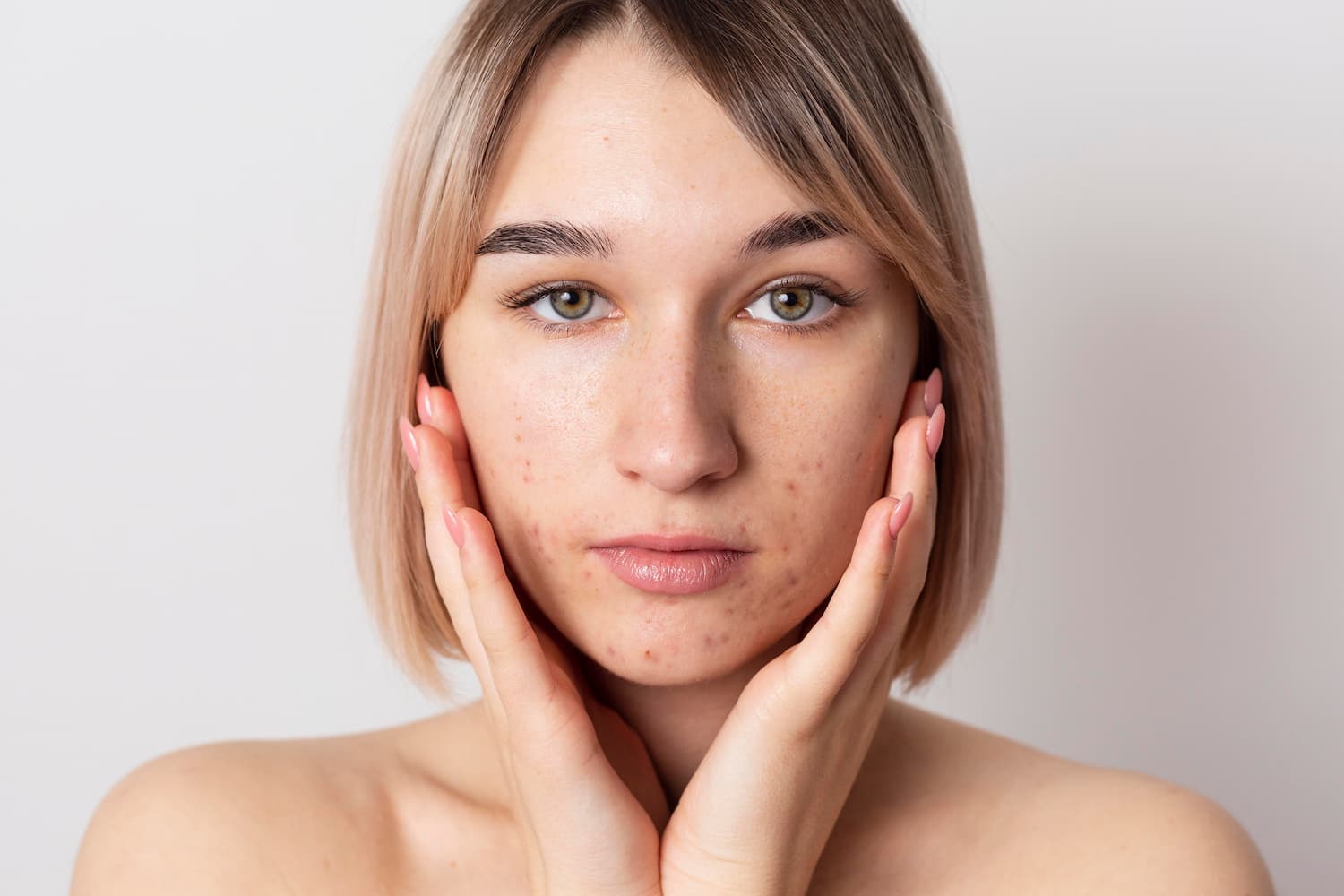
The cult drug Benzacne owed its effectiveness precisely to benzoyl peroxide. Since its withdrawal, many damaging myths have arisen about this substance. Here we debunk them.
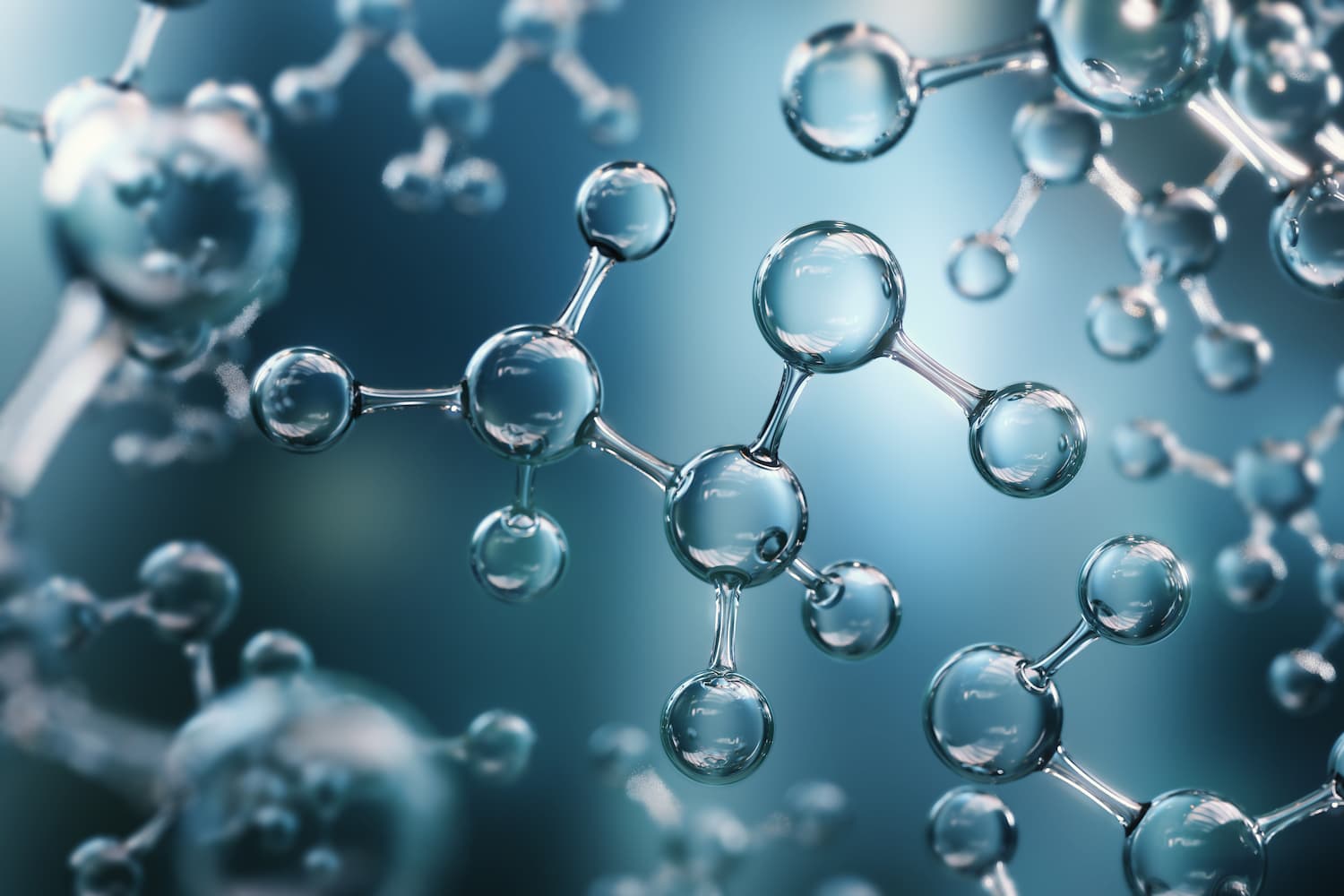
Do you already use niacinamide products in your daily skincare routine? If not, it's time to start.
